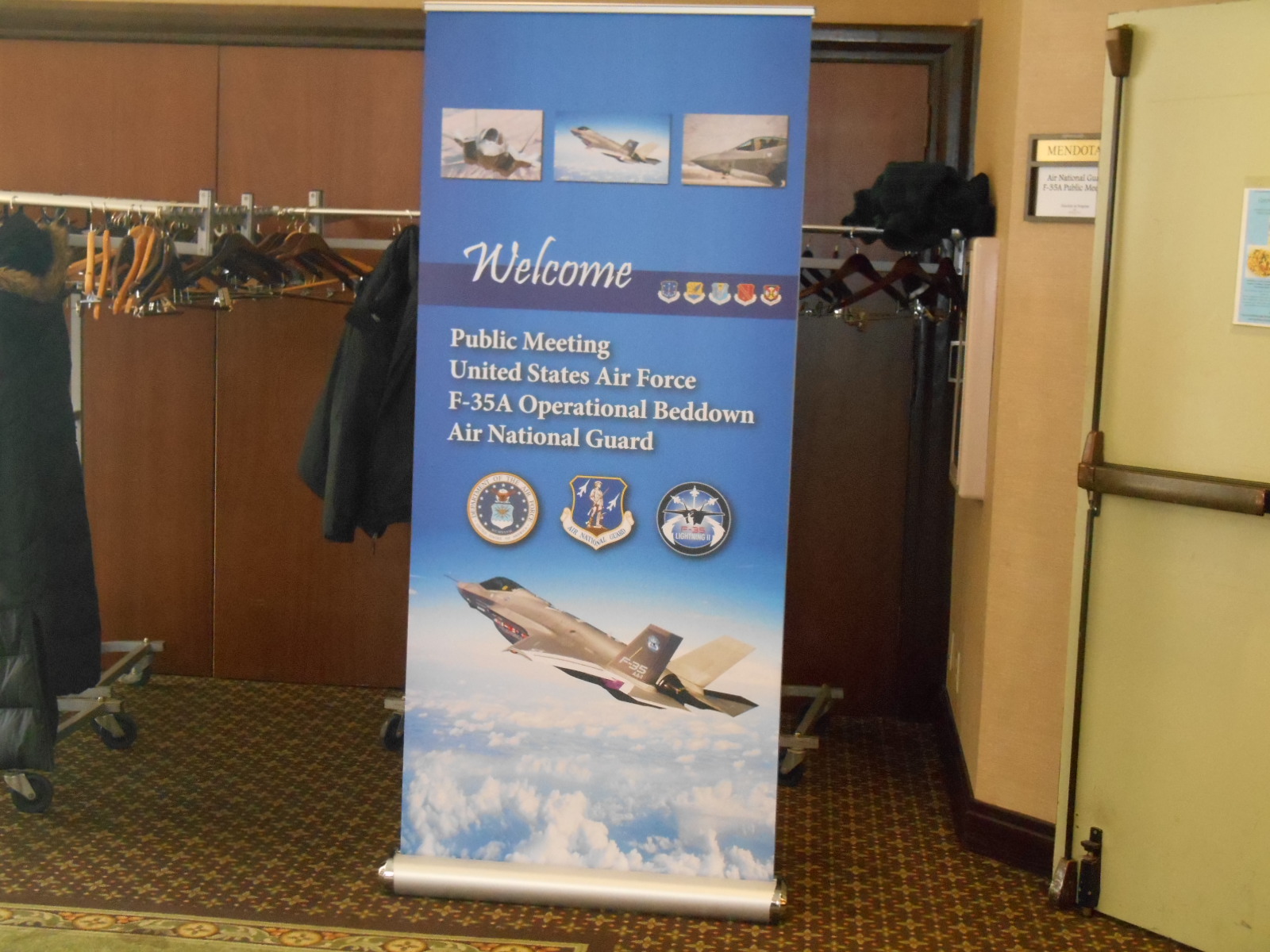Last night the National Guard and U.S. Air Force held a “scoping” meeting for the Environmental Impact Statement (EIS) that must be developed before “beddown” of F35s at Madison Truax military base. The National Guard Bureau (NGB) is managing the EIS process with a consulting firm. The purpose of the meeting was to gather public input on the range of issues the military should consider in the EIS. See more details in Steve Verburg’s Wisconsin State Journal article.
Unfortunately, the NGB did very little to inform or engage the people in neighborhoods very near the military base who are already negatively affected by the F-16s currently at the base, and will be most impacted by the F-35s–especially the low income Truax apartments about half a mile to the southeast the base and the trailer park about half mile west.
According to the Code of Federal Regulations ( §989.18) the NGB is required to follow for the EIS: “Where it is anticipated the proposed action and its alternatives will have disproportionately high and adverse human health or environmental effects on minority populations or low-income populations, special efforts shall be made to reach these populations. This might include special informational meetings or notices in minority and low-income areas concerning the regular scoping process.”
Further, Ms. Christel Johnson, the environmental engineer with the National Guard Bureau who is leading the EIS process, told me in an email in mid-February: “If the initial screening analysis identifies an affected community that is minority and/or low-income, or identifies a disproportionately high and adverse effect upon a minority and/or low-income community, then the Agency will evaluate whether a smaller scale scoping analysis should be designed and implemented to solicit community involvement and input within the affected community.”
However, Ms. Johnson informed me at the March 8 meeting (just a few weeks after telling me the above) that no meetings would be held in the vulnerable communities near the base, and no special efforts would be made to engage people in these neighborhoods—there would only be one more public meeting at the end of 2018 or so, likely at the Crowne Plaza. She assured me that people could take the bus there. When I asked what outreach had been done to let people in low income neighborhoods close to the base know about the meeting last night, she said notices had been placed in the newspaper, and posters were placed in public spaces, such as grocery stores and gas stations.
This very limited outreach strategy—completely inadequate to reach and engage vulnerable communities in this process–indicates that National Guard officials and their consultants have already decided there are no disproportionately high impacts to the people living in low income areas close to the base and therefore no need to make special efforts to engage them. If so, we would like to see the “screening analysis” on which this decision was based. We have asked Ms. Johnson for it. We’ll see if she shares it.
The Madison Chamber of Commerce held a special “Together Truax” meeting in an adjacent room at Crowne Plaza during the scoping meeting. Meanwhile, citizens who realize their comments submitted for the EIS process will likely be dismissed (or ignored), protested outside of Crowne Plaza. See photo below.


